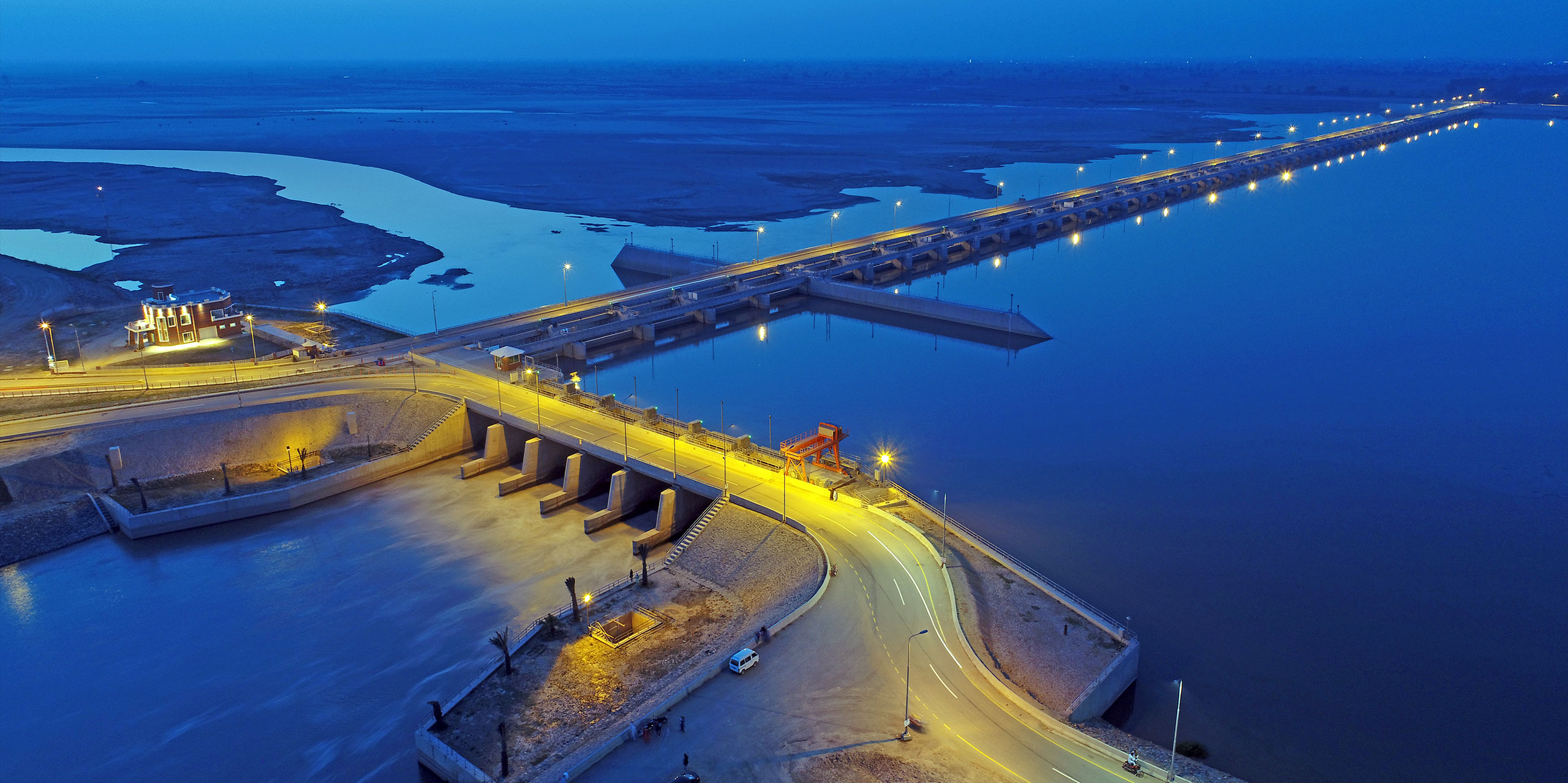
The Challenge
The client (Punjab Irrigation Department) appointed M/S Descon Engineering Limited for the construction of the New Khanki Barrage in 2013. SMEC and WS Atkins formed a Joint Venture and was appointed to the team as Engineering General Consultant.
The following objectives were outlined:
- Enhanced Flood Passing Capacity for a hundred-year period flood discharge
- Passing of floods at lower wave heights
- Effective and comprehensive river control with lower Crest of the weir
- Provision of undersluices, silt excluders and skimming platform to achieve effective sediment control
- Enhanced capacity of Head regulator
- Provision of barrage of Radial gates for better discharging efficiencies.
- Road Bridge Across the structure to historically connect both banks of the river
- Service Bridges across the structures
- Electric operation with SCADA Control
- Construction of colony and offices
- Social Action Programme and environmental improvement
The challenge for the project was to come up with a high-tech barrage design to incorporate adaptations to hydrological analysis with climate change projections, whilst considering local experience and lessons learnt from previous similar projects. The design and construction planning needed to devise safety and construction protocol to mitigate flood risk during the winter season and protect completed works during monsoon when no work was possible.






The Solution
The new barrage was proposed to be built within the riverbed 900 feet downstream of the old headworks with concentric and parallel axis. The total length of the Barrage is 4384ft.
The design process of the New Khanki Barrage was a sustainable approach that incorporated modern construction techniques and systems and applied lessons learned from the recent rehabilitation barrage project and the experience of the 2010 flood.
Major civil works constructed under the project include the main gated Weir with upstream floors, glacis and stilling basin. The new Barrage Wier consists of 55 bays, each 18.29m and ten under sluice bays (five on each side) also 18.29m each but with a depressed crest. The Barrage has two abutments at end of the structures with flared out wing walls and 62 piers to support the road bridge and the hoisting mechanism of the canal radial gates. These divided walls also house fish ways for ecological protection of fish migration. Two service bridges span over the piers for maintenance, regulation, and inspection purposes.
It is first time in the history that riverbanks have been connected by a bridge. The road links on both sides and has connected to new roads and widening of existing roads. This has enabled tremendous uplift in the economy and trade of the area.
SMEC’ s scope of work included:
- Provision of all required surveys and investigations
- Review civil, mechanical, and electrical designs (and updating as required)
- Construction supervision and contract management
- Ensuring compliance with the resettlement plan, environmental management plan and all technical specifications.

Partnerships and Multi-disciplinary approach
The project is an example of good design, planning, execution, and coordination between stakeholders—comprising Asian Development Bank (ADB), the government, executing and implementing agencies, consultants, and contractors.
During inception reporting of the project, major design changes were proposed by SMEC to enable cost efficiencies and better performance of the barrage. Such works within the bed of the river required a dynamic improvised approach between client, stakeholders which resulted in the successful completion of the project within stipulated time and cost.
The exceptional outcomes resulted in the project being subject of a detailed case study by the Asian Development Bank, published in November 2021, titled ‘Development and Social Impacts of Pakistan’s New Khanki Barrage: A Project Benefit Case Study’.
Project Impact
The construction of Barrage was completed in August 2017 and was formally handed over to the Punjab Irrigation Department in June 2019.
The project is one of the most transformative initiatives ever undertaken by the Government. Barrage sets real example and template for relevant decision-makers, which should improve their capacity to plan for future investments. The project was intended to benefit the large population, particularly women and girls, by providing better access to education, health care, transport, recreation, and places of worship, in addition to generating income.
Community representatives were consulted in the design of the social facilities to ensure that the community could participate in decision making. Improving agricultural production and farm income in the barrage’s command area is a sustainable collective benefit at national level.




